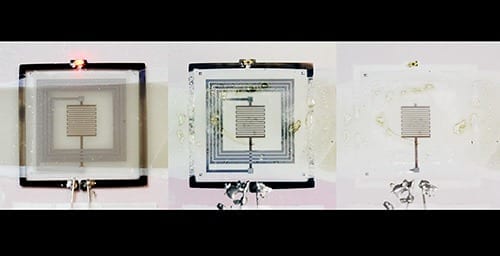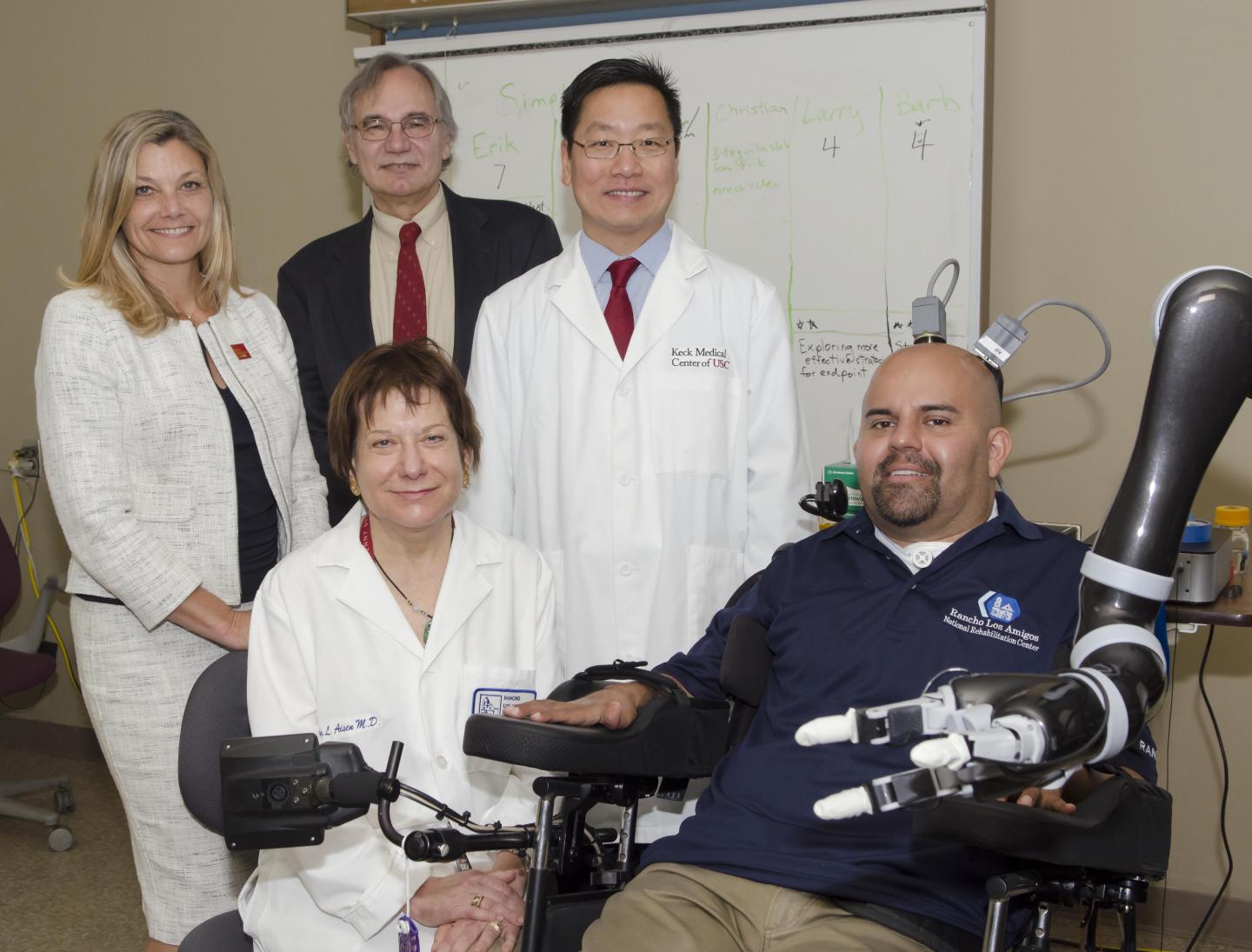
Where do electronics go when they die? Most devices are laid to eternal rest in landfills. But what if they just dissolved away, or broke down to their molecular components so that the material could be recycled?
University of Illinois researchers have developed heat-triggered self-destructing electronic devices, a step toward greatly reducing electronic waste and boosting sustainability in device manufacturing. They also developed a radio-controlled trigger that could remotely activate self-destruction on demand.
The researchers, led by aerospace engineering professor Scott R. White, published their work in the journal Advanced Materials.
“We have demonstrated electronics that are there when you need them and gone when you don’t need them anymore,” White said. “This is a way of creating sustainability in the materials that are used in modern-day electronics. This was our first attempt to use an environmental stimulus to trigger destruction.”
White’s group teamed up with John A. Rogers, a Swanlund chair in materials science and engineering and director of the Frederick Seitz Materials Laboratory at Illinois. Rogers’ group pioneered transient devices that dissolve in water, with applications for biomedical implants. Together, the two multi-disciplinary research groups have tackled the problem of using other triggers to break down devices, including ultraviolet light, heat and mechanical stress. The goal is to find ways to disintegrate the devices so that manufacturers can recycle costly materials from used or obsolete devices or so that the devices could break down in a landfill.
The heat-triggered devices use magnesium circuits printed on very thin, flexible materials. The researchers trap microscopic droplets of a weak acid in wax, and coat the devices with the wax. When the devices are heated, the wax melts, releasing the acid. The acid dissolves the device quickly and completely.
To remotely trigger the reaction, researchers embedded a radio-frequency receiver and an inductive heating coil in the device. The user can send a signal to cause the coil to heat up, which melts the wax and dissolves the device.
Read more: Mission possible: This device will self-destruct when heated
The Latest on: Self-destructing electronic devices
[google_news title=”” keyword=”Self-destructing electronic devices” num_posts=”10″ blurb_length=”0″ show_thumb=”left”]
via Google News
The Latest on: Self-destructing electronic devices
- ‘Doctor Who’ Episode 4 Recap: Scenes of Destructionon May 17, 2024 at 5:00 pm
In an episode simmering with tension, the Doctor and Ruby discover an army of religious soldiers on a largely deserted planet.
- Are Your Habits and Beliefs Self-Destructive?on May 14, 2024 at 7:23 am
A new book argues that many of us are stuck in old, unhelpful patterns—but we can improve our lives by finding our intuition and authenticity.
- Self-Destructing Syringe Market Size, Share and Growth Opportunitieson May 7, 2024 at 5:00 pm
The current market research report delves into the demand dynamics of the Self-Destructing Syringe industry across various segments, offering insights into its size, share, growth trajectory, trends, ...
- Ben Messafi | The encampment is self-destructingon May 7, 2024 at 12:12 pm
The flag of the Popular Front for the Liberation of Palestine was flown at the encampment on April 30. Credit: Derek Wong More than one week into the encampment on College Green, with over 150 ...
- Plastic-eating bacteria can help waste self-destructon April 29, 2024 at 5:00 pm
Scientists have developed a "self-digesting plastic", which, they say, could help reduce pollution. Polyurethane is used in everything from phone cases to trainers, but is tricky to recycle and ...
- Plastic-eating bacteria can help waste self-destructon April 29, 2024 at 5:00 pm
The spores remain dormant during the useful lifetime of the plastic, but spring back to life and start to digest the product when exposed to nutrients in compost. There's hope "we can mitigate ...
- Cavs self-destruct in the second half, watch helplessly as Orlando Magic even series with 112-89 winon April 27, 2024 at 8:33 am
And then they self-destructed. Cleveland lost Game 4 to the Orlando Magic on Saturday afternoon, 112-89. The once-lopsided matchup, with the Cavs in total control, is now tied at two games apiece.
- Keeper Security Introduces Time-Limited Access and Self-Destructing Records for Hyper-Secure Credential Sharingon April 8, 2024 at 9:00 pm
Time-Limited Access and Self-Destructing Records ensure that users ... and zero-knowledge security to protect every user on every device. Our next-generation privileged access management solution ...
- My partner's self-destructingon February 12, 2024 at 4:00 pm
My partner (who I live with) is on a self-destruct course because he doesn't see his children from a previous marriage, and it's literally killing him. It manifests itself in low self-esteem ...
- self destructon November 24, 2023 at 4:00 pm
That’s why we like the “rapid power cycling” method of triggering the drive’s self-destruct sequence; it could easily be disguised as shaking hands in a stressful situation. Who knew that ...
via Bing News











